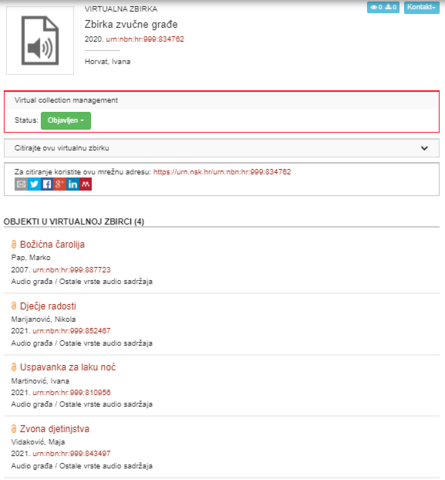In DABAR, a system of digital academic archives and repositories that SRCE is developing in cooperation with the academic and research community, support has been implemented for gathering various types of stored digital objects into virtual collections. In this way, users can collect previously published objects, additionally describe them and present them in repositories at one place.
DABAR Coordination Committee defined the metadata description of the new Virtual Collection object. Implemented functionalities include the ability to describe the collection, add or remove objects from the collection, change the order of objects in the collection, self-archive collections, add collections via the REST API programming interface, and deliver the description of the collection as a single record via the OAI-PMH repository interface. In virtual collections, users can only add objects that are previously stored in the same repository in which they create the virtual collection. The repository manager must approve the publication of the virtual collection.
An example of a collection can be an art exhibition, which, in addition to art images, also includes the theoretical part of the work, photos from the exhibition, invitations, reviews, etc. Another example can be a research project where members of the project team create data sets, various types of papers, presentations, project documentation, reports, etc. All these results can be combined in a virtual collection.



